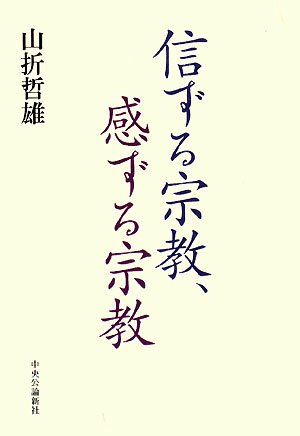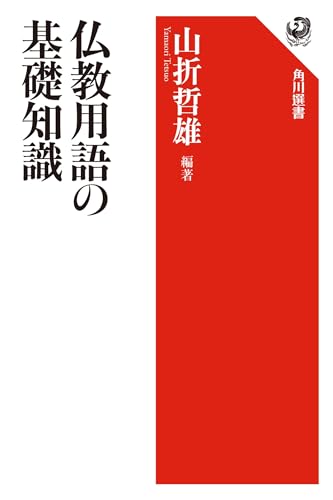3 0 0 0 IR 「捨身飼虎」の変容
- 著者
- 山折 哲雄
- 出版者
- 国際日本文化研究センター
- 雑誌
- 日本研究 (ISSN:09150900)
- 巻号頁・発行日
- no.15, pp.93-103, 1996-12
仏教の説話文学に登場する「捨身飼虎」の物語は、インドでつくられ、中国の千仏洞の壁画に描かれ、やがて日本の法隆寺にある厨子の側壁に再現されることになった。しかしこの絵はその残酷なシーンのためか、わが国では、その後しだいに敬遠され忌避されるようになった。ところが中世になって、三匹の野生の虎に見守られて瞑想する僧の絵がつくられることになる。「華厳絵巻」のなかに出てくる七世紀の韓国僧・元暁にかんする一シーンがそれだ。この絵巻をつくる上で大きな役割をはたしたのが明恵(一一七三~一二三二)であるが、そのかれにも、小動物や小鳥たちに囲まれて瞑想にふけっている肖像画がある。明恵の伝記によると、かれは若いころ「捨身飼虎」図に惹かれ、そのように生きようと願うが、やがて成長し、動物たちとの共存の生活を夢見るようになったのである。「捨身飼虎」の犠牲のテーマは、日本ではどうも定着しなかったようだ。
2 0 0 0 OA 序言
- 著者
- 山折 哲雄
- 出版者
- 国際日本文化研究センター
- 雑誌
- 日本文化の深層と沖縄 = The Deep Roots of Japanese Culture and Okinawa
- 巻号頁・発行日
- vol.12, pp.1-6, 1996-12-27
2 0 0 0 日本の生活文化の通文化性に関する総合的研究
- 著者
- 白幡 洋三郎 村井 康彦 井上 章一 小野 芳彦 山地 征典 園田 英弘 村井 康彦 飯田 経夫 山折 哲雄 イクトット スラジャヤ 長田 俊樹 白幡 洋三郎 セルチュク エセンベル
- 出版者
- 国際日本文化研究センター
- 雑誌
- 国際学術研究
- 巻号頁・発行日
- 1994
平成6年度は、イスラム文化圏における日本の生活文化の受容調査であり、対象国としてトルコを選び、イズミール、アンカラ、イスタンブールを中心に調査を行った。トルコはイスラム文化圏とはいえ、近代化に一定の成功をおさめた国であり、生活用品の分野においては先進国と同様の工業製品がみられるものの、日本製品はきわめて少なかった。また親日国であるといわれているにもかかわらず、教養・実用・趣味・娯楽等の分野においても日本にかかわりのあるものは意外なほどに見つからなかった。むしろ西洋、とくにドイツとの関係が著しいことが確認できた。このことにより、トルコをイスラム文化圏と見るとともに、西洋文化圏もしくは西洋文化に強く左右されている文化圏と見て、日本文化とのかかわりを考察すべきであろう。平成7年度の対象地域は南アジア・東南アジアであった。ベトナムにおいては、ベトナム戦争終結後、社会主義政権が新たな経済政策をとり、その安定的発展によって民衆の生活に新しい展開が生まれている。その新しい展開の中に日本の伝統的な文化に属す茶道・華道なども、一定の受容が見られる。しかしとりわけ日本の生活文化としては、現代の大衆文化と見てよい電化製品の普及やカラオケ・コンピュータゲームなど娯楽分野での受け容れがきわめて顕著に見られた。また、もともとは中国経由で入ってきた盆栽が、日本語のBONSAIとして広まっている。すなわち中国経由の既存文化が、外からの刺激(日本の文化)によって新しい展開を見せている点で注目される。文化の盛衰を構造的に分析する材料として重要だと考えられる。またインドにおいては、日本の生活文化の進出はきわめて低調であり、大衆文化としてほとんど受け入れられていないことがわかった。華道や俳句では、知識人を核にした富裕層にのみ愛好会や同好会の形で存在している程度である。これは国民の所得水準によって規定されているものと考えられ、日本の生活文化の普及を大衆レベルでの異文化受容と考えた場合、経済的な要因が大きな困難となる実例であろう。タイにおいては、広い分野での日本の生活文化の受容が見られる。とくに日本の食品や生活用品はすでに広く生活の中に定着している。日本食やインスタントめんなどは、日本の手を放れ自前で独自の加工を施したものも豊富に出回っている。マンガは日本のものが翻訳されて各種出版されており、タイ人の手によるタイ語ならびに中国語の漫画が出回るほどになっている。娯楽や実用・趣味の分野でも日本の生活文化は広く受容されていることがあきらかとなった。平成8年度の調査地域である旧社会主義圏では、生活必需品のレベルでの日本の生活文化受容が見られたものの、それ以外での、「教養」「精神」「趣味」「娯楽」など、経済的な余裕に左右される分野での受容は乏しいことが明らかとなった。この地域では、社会主義政権の崩壊後、生活は不安定になったが、一方で西側諸国からの物資・情報が、以前より広範に流入している。従って、旧社会主義政権下にくらべて「異文化」の受容は進んではいるものの、その範囲は狭い。テレビ、冷蔵庫、オ-ディオ機器などの電化製品では、高価な日本製はあこがれの的だが、日本製を装ったものが市場に流通しており、特異な日本の生活文化受容が見られる。社会主義政権の崩壊に急激な暴力革命が伴ったル-マニアでは、経済復興が遅れており、国民生活に余裕がなく、日本製品に限らず西側の製品全般が贅沢品とみなされ、これらの需要は低迷している。華道・茶道・盆栽・俳句などの教養分野は、わずかに一握りのインテリ層に受容され、禅や宗教など精神文化の領域は表面にはまったく現れていない。日本の生活文化を大衆レベルでの海外への進出からとらえると、受容する側の生活水準に規定されることが明らかになった。したがって、文化の通文化性に関しても、その文化項目固有の「通文化性」は、受け入れる側の経済的、文化的状況に大きく左右されるといえるであろう。
1 0 0 0 信ずる宗教、感ずる宗教
1 0 0 0 IR 二〇一九年度 春季公開講演会講演録 西行と芭蕉に開かれる親鸞 : 日本人の宗教心
- 著者
- 山折 哲雄
- 出版者
- 大谷学会
- 雑誌
- 大谷学報 (ISSN:02876027)
- 巻号頁・発行日
- vol.99, no.1, pp.77-94, 2019-11
1 0 0 0 日本人はキリスト教をどのように受容したか
- 著者
- 山折哲雄 長田俊樹編
- 出版者
- 国際日本文化研究センター
- 巻号頁・発行日
- 1998
1 0 0 0 OA 講演:和辻哲郎の人生 芸術と倫理のあいだ
- 著者
- 山折 哲雄
- 出版者
- 宗教哲学会
- 雑誌
- 宗教哲学研究 (ISSN:02897105)
- 巻号頁・発行日
- vol.13, pp.135-147, 1996 (Released:2019-03-20)
1 0 0 0 IR 後七日御修法と大嘗祭 (共同研究「古代の祭祀と信仰」本篇)
- 著者
- 山折 哲雄
- 出版者
- 国立歴史民俗博物館
- 雑誌
- 国立歴史民俗博物館研究報告 (ISSN:02867400)
- 巻号頁・発行日
- vol.7, pp.p365-394, 1985-03
Kūkai, the Heian Buddhist (774-835) received permission from the government to construct a hall called Shingonin in the center of the royal palace for the performance of rituals of Esoteric Buddhism. Every year, a ritual called Goshichinichimishiho was performed at the hall over seven days every second week during the New Year. A mandala was displayed as the central divinity and other images of Esoteric Buddhism were installed. Many followers of Esoteric Buddhism prayed for national security and the harvest.The most important thing to be noted in the ritual was that prayers were offered while sacred water was sprinkled on the emperor. When the emperor could not be present at the ritual, prayers were offered while sacred water was sprinkled on the emperor's clothes placed on a table. This ritual was believed to drive away evil spirits that may possess the emperor, and to make his body strong and full of life.Goshichinichimishiho is reminiscent of rituals such as Niinamematsuri and Onamematsuri that took place in the royal palace from ancient times. Niinamematsuri is a harvest cult held in November every year. In this ritual the emperor slept and ate with his guest the god Amaterasuōmikami in a temporary palace. The importance of the ritual lies in the fact that it tried to soothe down and fortify the soul of the emperor, which would gradually have weakened as the year drew to an end. In this sense the ritual was performed to strengthen and revive the spirit of the emperor. When a new emperor ascended the throne, after the coronation, Onamematsuri was performed. In this case, the ritual to revive and fortify the soul of the emperor took place after the ritual where the soul of the previous emperor was succeeded by the new emperor. Thus the fortification and succession of the empeor's soul were the main importance of Niinamematsuri and Onamematsuri, whereas in Kūkai's Goshichinichimishiho, the prime importance of the ritual lay in driving away evil spirits that might possess the emperor. From the comparison of these two rituals, Kūkai must have been conscious of the political and religious function of Niinamematsuri and Onamematsuri and had the intention to oppose these rituals by introducing the ideology of Esoteric Buddhism in the center of a national ritual. Goshichinichimishiho performed in Shingonin was continued during the Heian period. In later times it became less popular because of the rise of the study of Japanese classical literature and Confucianism. After the Meiji Era it was completely abolished.
1 0 0 0 OA <研究ノート>「捨身飼虎」の変容
- 著者
- 山折 哲雄
- 出版者
- 国際日本文化研究センター
- 雑誌
- 日本研究 : 国際日本文化研究センター紀要 (ISSN:09150900)
- 巻号頁・発行日
- vol.15, pp.93-103, 1996-12-27
仏教の説話文学に登場する「捨身飼虎」の物語は、インドでつくられ、中国の千仏洞の壁画に描かれ、やがて日本の法隆寺にある厨子の側壁に再現されることになった。しかしこの絵はその残酷なシーンのためか、わが国では、その後しだいに敬遠され忌避されるようになった。ところが中世になって、三匹の野生の虎に見守られて瞑想する僧の絵がつくられることになる。「華厳絵巻」のなかに出てくる七世紀の韓国僧・元暁にかんする一シーンがそれだ。この絵巻をつくる上で大きな役割をはたしたのが明恵(一一七三~一二三二)であるが、そのかれにも、小動物や小鳥たちに囲まれて瞑想にふけっている肖像画がある。明恵の伝記によると、かれは若いころ「捨身飼虎」図に惹かれ、そのように生きようと願うが、やがて成長し、動物たちとの共存の生活を夢見るようになったのである。「捨身飼虎」の犠牲のテーマは、日本ではどうも定着しなかったようだ。
1 0 0 0 ガンディーとネルー : その断食と入獄
1 0 0 0 OA <研究ノート>方法としての「もどき」 : 折口信夫の場合
- 著者
- 山折 哲雄
- 出版者
- 国際日本文化研究センター
- 雑誌
- 日本研究 : 国際日本文化研究センター紀要
- 巻号頁・発行日
- vol.1, pp.97-105, 1989-05-21
折口信夫は、日本の文学や芸能における基本的な方法が、先行する文学や芸能の形式を模倣するところにあると考え、それを「もどき」の方法と称した。「もどき」という術語には「真似る」という意味と「抵抗する」という意味の両義性があるとかれはいう。模倣しつつ批評するというように解釈してもいいだろう。和歌文学における「本歌取り」も謡曲「翁」における三番叟の演出も、みなこの「もどき」の方法にもとづいているのである。したがってもしもギリシアの芸術が「自然の模倣」であったとするならば、日本の芸術は「芸術の模倣」から成り立っていたといえるかもしれない。
1 0 0 0 IR 道頓堀とベナレス--葬墓制と他界観の一局面 (共同研究「葬墓制と他界観」)
- 著者
- 山折 哲雄
- 出版者
- 国立歴史民俗博物館
- 雑誌
- 国立歴史民俗博物館研究報告 (ISSN:02867400)
- 巻号頁・発行日
- no.49, pp.p195-208, 1993-03
近松門左衛門の「曽根崎心中」は、元禄十六年(一七〇三)の四月七日に、大阪梅田の曽根崎天神で実際におこった事件をモデルにしている。ところがそれ以後、心中事件が多発するようになり、二十年後の享保八年(一七二三)になって心中取締令がだされた。そのうえ心中者の死骸は心中現場に近い墓所に取り捨てるべきことが申しわたされていた。なかでも道頓堀墓所には多くの心中者の遺骸がかつぎこまれ、その方面での筆頭格であった。そのためこの地域には大勢の乞食女郎非人たちが入りこみ、そこで餓死したり行き倒れたりする者があとを絶たなかった。この近世の道頓堀墓所をめぐる死体処理・死者儀礼の景観は、ある点でインド・ベナレスにおけるそれを想わせる。死者の処理をめぐって都市がどのような変貌を示すのかという点でも、その両者のあいだには不思議な照応がみられるのである。なぜなら肉体の焼尽と魂の昇天という転換の位相が、そこでは墓地を仲立ちとする半ば様式化した空間構成を通してあらわされているからである。そしてその空間構成の輪郭を明らかにするために、小論では近松の「曽根崎心中」の冒頭に掲げられている「観音廻り」の場面と、その終結部分に登場する「道行」の場面に分析を加えている。この近松の「観音廻り」と「道行」の場面が、二種の巡礼のパターンを象徴しているということに注目しよう。第一のパターンが、いわゆる霊地霊場廻りを中心とする巡礼である。この場合は「観音廻り」がそれにあたるだろう。これにたいして第二のパターンが、永遠の再生(昇天)を願う死出の旅という最後の巡礼行である。ここではそれが「道行」の場面にあたる。そしてこのような二種の巡礼のパターンがそのままベナレスにおける死者儀礼のなかにもみられることに私は着目したのである。小論はその両者を結び合せる比較研究の試みである。"Sonezaki Shinjū (The Love-Suicide at Sonezaki)" of Chikamatsu Monzaemon was modeled after an affair which actually happened at Sonezaki Tenjin (shrine dedicated to the deified spirit of Sugawara-no-Michizane), in Umeda, Ōsaka, on April 7 of Genroku 16 (1703). Thereafter, love-suicides came to occur frequently, and twenty years later, in Kyōhō 8 (1723), a Prohibitory Decree on Love-Suicide was issued. Furthermore, the order was given to abandon the bodies of love-suicides in a cemetery near the site of the suicide. The bodies of many love-suicides were carried into the Dōtonbori Cemetery, which ranked top in this respect. Because of this, a large number of beggars, prostitutes, and untouchables entered this area, and there was no end to those who died of disease or collapsed on the street.Scenes of the disposal of the body and the services for the dead in this pre-modern period remind us of the scene of Benares, India, in some respects. There can be seen a strange correspondence between them in the way the city underwent a transformation connected with the disposal of bodies, because the phase of transition between the destruction of the flesh by fire, and the ascension of the spirit, was expressed in a semi-stylized space structure through the mediation of the cemetery. To clarify the outline of the space structure, the author, in this paper, analyzes the scene of the "Pilgrimage to the Kannon" at the beginning of Chikamatsu's "Sonezaki Shinjū", and the scene of the "Lovers' Trip" at the conclusion of the piece.Let us pay attention to the fact that these scenes, the "Pilgrimage to the Kannon" and the "Lovers' Trip" by Chikamatsu, symbolize two types of pilgrimage. The first type is a pilgrimage centering on visits to so-called sacred places or sites; in this piece, the "Pilgrimage to the Kannon". The second type, on the other hand, is the final pilgrimage, that is the suicide trip of lovers who hope for eternal resurrection (ascension to Heaven); in this piece, the scene of the "Lovers' Trip". The author also notes that these two types of pilgrimage appear in exactly the same form, in the services to the dead in Benares. This paper is an attempt at a comparative study that links these two.
1 0 0 0 OA 「神」から「翁」へ : 基層信仰にかんする一考察
- 著者
- 山折 哲雄
- 出版者
- 国立歴史民俗博物館
- 雑誌
- 国立歴史民俗博物館研究報告 = Bulletin of the National Museum of Japanese History (ISSN:02867400)
- 巻号頁・発行日
- vol.2, pp.125-163, 1983-03-15
Originally, the Japanese god (Kami) was an invisible deity but after the 8th century to the 9th century (Nara-Heian period) it assumed the shape of an aged man (okina) in mythological legends and legendary literature. The invisible god donned the mask of an okina, appeared into this world, delivered oracles and made predictions. About the same time, images of gods were produced. A notable fact is that one of the oldest images found of a god possesses the features of an old man. In Japan, Buddism exerted a deep influence on the production of divine figures, but images of Buddha scarcely took the shape of an old man. At the beginning of the Heian period the facial expressions of a god assuming the features of an okina were developed from the okina masks in the Noh plays that were perfected by Zeami during medieval times and eventually formed a typical pattern. Moreover, the fact that the okina mask appearing in the Noh plays was handed down as the mask of god, corresponds well with the meaning of the okina as a godly symbol in the legends previously mentioned.A study of the legends of the okina in historical literature shows that the origin could be traced to the genelogy of yamanokami (mountain god) and uminokami (sea god). They sometimes helped in human crisis, gave knowledge, set ethical examples to people and imparted revelation. In other words, this was a mediator between the will of the gods, spirits and the human world. They appeared to the human world through spirits prossession and this tendency shows its profound shamanistic character.The okina that appears in ancient literature takes the figure of an ordinary man as well as priest; this shows that it was a divine reality belonging to a liminal area that covered beliefs in god as well as Buddha.God assuming the shape of an okina, respected as both god and man as according to the legends, reflects the Japanese belief towards ideal aging, quite different from the Western ideology. Old age is a period that symbolizes tragedy, disgrace and despair, but also it is a period that reflects humanity consisting of unselfish wisdom; innocent childishness and vigorousness. The divine image that ancient Japanese tried to attach to the icon of the okina seems to exert a strong influence on our basic ethnic consciousness.
1 0 0 0 OA 方法としての「もどき」 : 折口信夫の場合
- 著者
- 山折 哲雄
- 出版者
- 国際日本文化研究センター
- 雑誌
- 日本研究 : 国際日本文化研究センター紀要
- 巻号頁・発行日
- vol.1, pp.97-105, 1989-05-21
折口信夫は、日本の文学や芸能における基本的な方法が、先行する文学や芸能の形式を模倣するところにあると考え、それを「もどき」の方法と称した。「もどき」という術語には「真似る」という意味と「抵抗する」という意味の両義性があるとかれはいう。模倣しつつ批評するというように解釈してもいいだろう。和歌文学における「本歌取り」も謡曲「翁」における三番叟の演出も、みなこの「もどき」の方法にもとづいているのである。したがってもしもギリシアの芸術が「自然の模倣」であったとするならば、日本の芸術は「芸術の模倣」から成り立っていたといえるかもしれない。
1 0 0 0 日本の生活文化の通文化性に関する総合的研究
- 著者
- 村井 康彦 小野 芳彦 コーニッキー ピーター 白幡 洋三郎 園田 英弘 パンツァー ペーター スミス ヘンリー 飯田 経夫 山折 哲雄 KORNICKI Peter SMITH Henry PANTZER Peter ピーター コーニッキー ペーター パンツァー ヘンリー スミス
- 出版者
- 国際日本文化研究センター
- 雑誌
- 国際学術研究
- 巻号頁・発行日
- 1992
本年度の調査は、17世紀まで世界の先進文化をリ-ドしていたラテンヨーロッパ、特にスペイン・ポルトガルとそれらによって植民地化されていたラテンアメリカにおける日本文化の現状を調査する事を中心軸に据えた。また先進国の中でも、調査をやりのこしていたアメリカ合衆国を加えた。スペイン・ポルトガルの両国は、現在ヨーロッパ先進国に対する農業生産物の供給国として、むしろ開発途上国的な色彩を持っている。そこで、日本の工業製品はこの両国との競合関係にはなく、日本製品の出超の事態にある。家電製品、自動車等は、いうまでもなくスペインやポルトガルの製品が日本には皆無であり、日本製品のみが両国に進出している。しかしながら、ヨーロッパ先進諸国、ドイツ・イギリス・フランスの製品と比較すれば、日本製品の進出は少ない。現地調査の結果、日本の生活文化として特に注目に値するのは、テレビゲーム、盆栽、テレビアニメの3つでであることがわかった。テレビゲームは、ポルトガル・スペインのおもちゃ屋の店頭でもっとも目立つ場所に飾られており、他国の製品の出番はほとんどないといってよい。じじつジェトロのマドリード支部での聞き取り調査でも現在の日本・スペイン間の貿易に、テレビゲームが占める割合は他の電気製品・工業製品を大きく圧倒するとの事であった。盆栽は、ヨーロッパ先進諸国でも相当の普及を遂げているが、ラテンヨーロッパでは現地の独自の盆栽文化が育っている事が特徴である。すなわち、ドイツ・フランス・イギリスでは、どちらかといえばまだ日本の伝統的な盆栽文化が尊重されており、愛好家は日本趣味の持ち主や日本通である事が多いのに対して、ラテンヨーロッパでは盆栽協会の会長以下幹部を現地人が占めており、盆栽愛好が庶民層にまで広がっている様子がうかがえた。またブラジルの調査でも、多数の日系人の存在にもかかわらず、盆栽協会の活動にブラジル人が進出しており、盆栽が庶民層に普及している事がはっきりした。先進ヨーロッパ諸国と違って、盆栽がもはやエキゾチシズムの対象でもなく、日本趣味の対象でもなくなっている。すなわち本当に現地に根を下ろした生活文化に育っている事は注目に値する。また、茶道・華道とは違って日本人の枠を離れて現地化しつつある点に盆栽文化の特徴があるようだ。テレビアニメはラテンヨーロッパでは極めて頻繁に放映されている日本製の番組である。朝の子供番組の時間帯には毎日2、3本の日本製アニメが吹き替えで放映されている。先進ヨーロッパのうちドイツ・イギリスではほとんど放映がみられないのに比較してフランスでは頻繁に放映されている。テレビアニメに関しては先進ヨーロッパ対開発途上的ラテンヨーロッパという対照がみられない。むしろカトリック圏(スペイン・ポルトガル・フランス、そして未調査ではあるが現地情報によればイタリアも含めてよい)では日本製アニメが多数放映されているのに対してプロテスタント圏ではほとんど放映がないと分析するのがよいだろう。その原因は、視聴者の好みから来るよりは、放映する側の思想にあるのではないかと考えられる。すなわちプロテスタント圏では子供向けに、全体として堅い教育番組が多いのに対して、カトリック圏では娯楽番組にも十分な放映時間を割いているという事情が考えられる。アメリカ合衆国の日本生活文化ではやはり食品が注目に値する。ドイツやイギリスでも同じであるが、インスタント食品としてのカップヌードルがこれらの国では相当の進出を見せている。ところがスウェーデンではほとんどこの種のインスタント食品はみられなかった。日本企業の関心の持ち方にも左右されるであろうが、むしろ、現地の食習慣が進出の多少に影響しているものと考えられる。
1 0 0 0 OA 老いをどう生きるか
- 著者
- 山折 哲雄
- 出版者
- 社団法人日本体育学会
- 雑誌
- 日本体育学会大会号
- 巻号頁・発行日
- no.49, 1998-08-20




